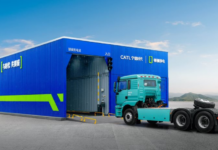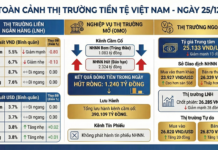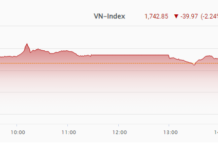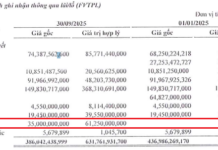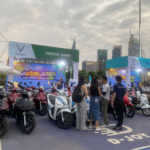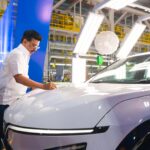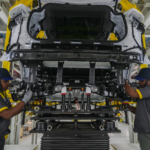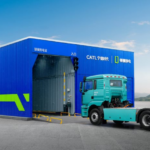Here is a summary of the Trên Ghế program, broadcast on HTV9 on August 5th.

There have been recent suggestions that a single company should not have a monopoly on electric vehicle charging stations, and that all brands should be able to use the same stations. What are your thoughts on this, Mr. Linh?
I believe that all vehicle users should have equal access to charging stations, and this is only fair. We also know that monopolies rarely benefit the consumer. Of course, each car brand has the right to cater to its own customers.
With gasoline, we can purchase it from numerous dealers. I believe that the development of a universal charging network should follow a similar approach. This should include standardized quality, safety, and pricing regulations.
Currently, VinFast has the largest network of charging stations in the country. However, some argue that they have invested significant time and resources into building this network and should not be expected to share it with competitors. What is your opinion on this matter?
I believe that this viewpoint is somewhat selfish. From a business perspective, if VinFast were to open their network to a wider market, they would have the opportunity to expand their customer base. Perhaps they have not yet taken this step due to policies regarding electricity distribution and resale.
By continuing to provide charging stations exclusively for VinFast vehicles, they are offering a convenient service to their customers. However, in the long run, opening up their network could be a strategic move. For instance, Tesla has recently signed agreements with major European and Asian car manufacturers to provide access to their supercharging network in the US. VinFast could consider a similar model to gain a competitive edge.
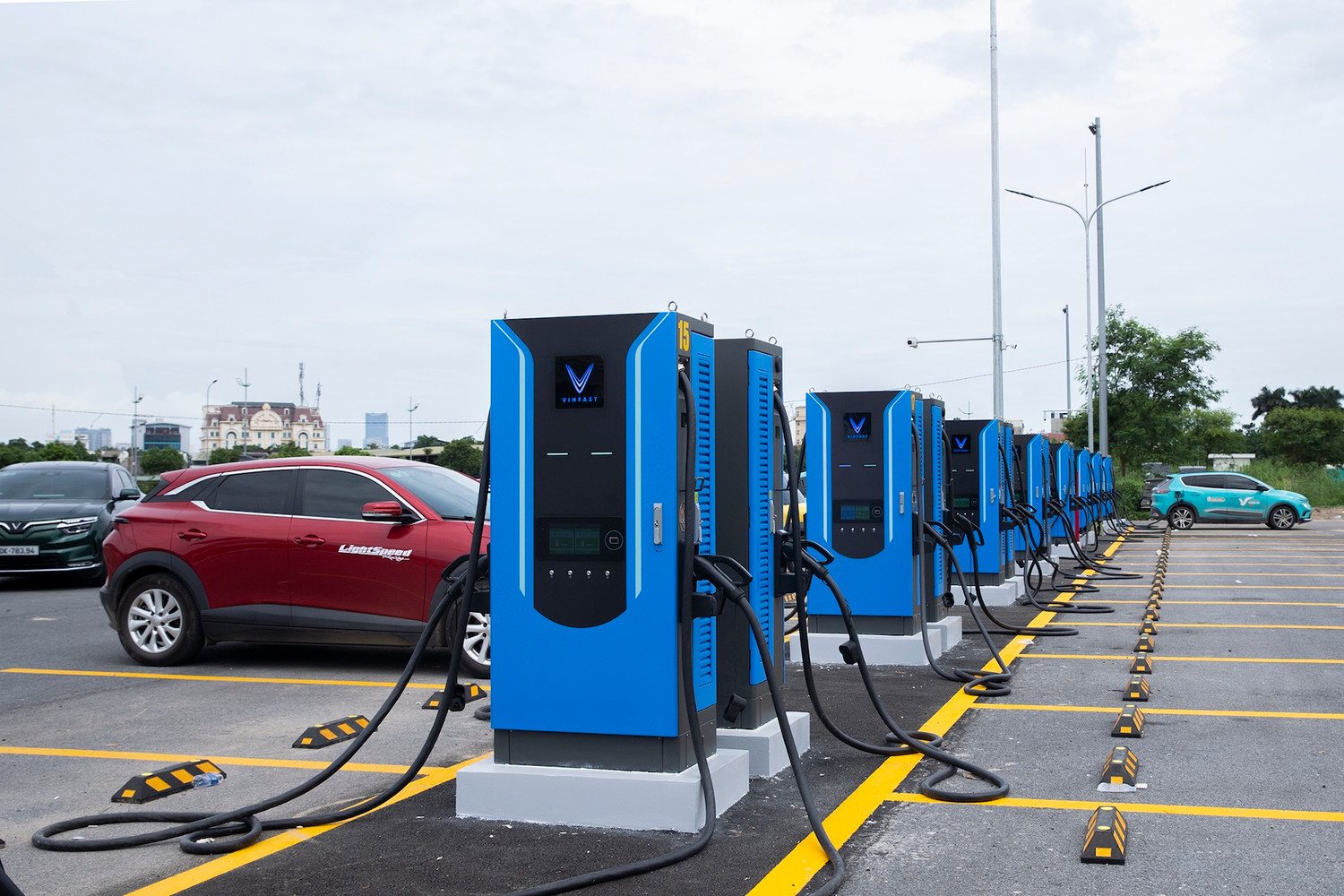
A VinFast charging station in Hanoi. Photo: VinFast
On the other hand, the current “closed” system is only an invisible barrier. As long as VinFast vehicles continue to receive free charging and other benefits, their customers will still have a significant advantage over other brands. Currently, there are dozens of charging providers, but their networks are limited and charging costs can be exorbitant. A single charge at these stations can cost up to 500,000 VND, while VinFast offers free charging at their stations for their customers.
However, some suggest that VinFast could allow other brands to use their stations but at a higher price. Do you think this is likely to happen?
This scenario would be similar to the gasoline business. If this were to occur, the government would play a crucial role in regulating the selling price. VinFast, along with other charging station providers, would need to adhere to a price framework, much like the one in place for gasoline.
At present, there is a common misconception that the gasoline price announced by the Ministry of Industry and Trade is the same as the retail price at gas stations. However, these are two distinct price categories. Should a private electric vehicle charging network emerge, dealers would have the autonomy to set their prices within a range determined by the government. Once commercialized, I believe no provider would want to deviate from this price framework, as attracting customers is key to success.

In previous Trên Ghế programs, guests have stated that since VinFast has already invested in a widespread network of charging stations, the government does not need to spend money building a separate network. What are your thoughts on this?
The construction of charging stations is similar to investing in roads and bridges, and often involves public-private partnerships. While we are not macro-policy planners and cannot provide an exact answer, it is evident that large-scale societal issues require collaboration between the state and private sectors.
Therefore, I believe that in the future, this scenario will unfold, and the ratio of division or the specific approach will require time to determine. However, it is clear that neither sector can achieve perfection on its own.
Currently, we have large corporations with state capital in the energy sector, such as the Vietnam Electricity Group (EVN) and the Vietnam Oil and Gas Group (Petrolimex), who are interested in developing charging solutions as an energy supply for the population. Whether or not they choose to enter this market is up to their own calculations.
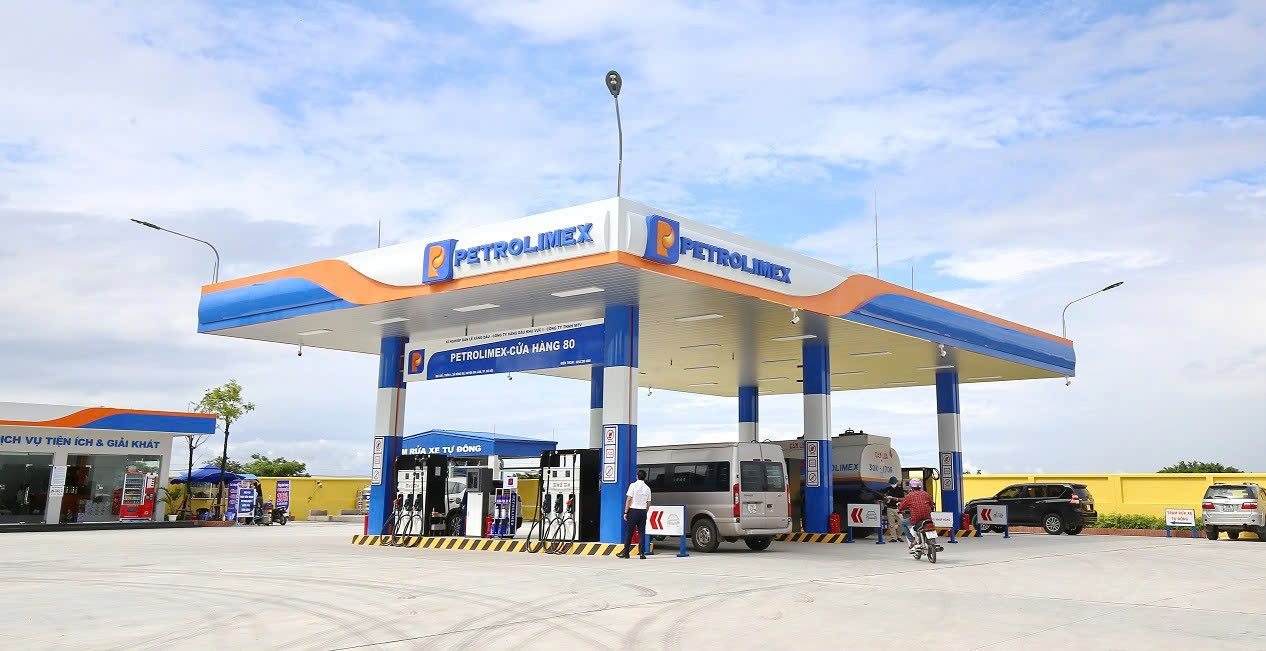
Petrolimex will make its own calculations regarding the construction of electric vehicle charging stations. Photo: Petrolimex
You mentioned Petrolimex, which has a widespread network of gas stations across the country. Do you think it would be beneficial for them to invest in electric vehicle charging stations as well?
In fact, this is already happening, as some Petrolimex gas stations have VinFast charging stations. However, as most electric vehicles in Vietnam are VinFast, this does not make a significant difference. The demand for third-party charging stations mainly comes from other brands.
I believe that the decision of other brands and service providers to enter the market depends on the market size and the existence of a substantial customer base. Apart from VinFast, there are a few other electric vehicle brands in the domestic market. If major brands achieve significant sales in Vietnam, charging providers will recognize the opportunity and invest more.
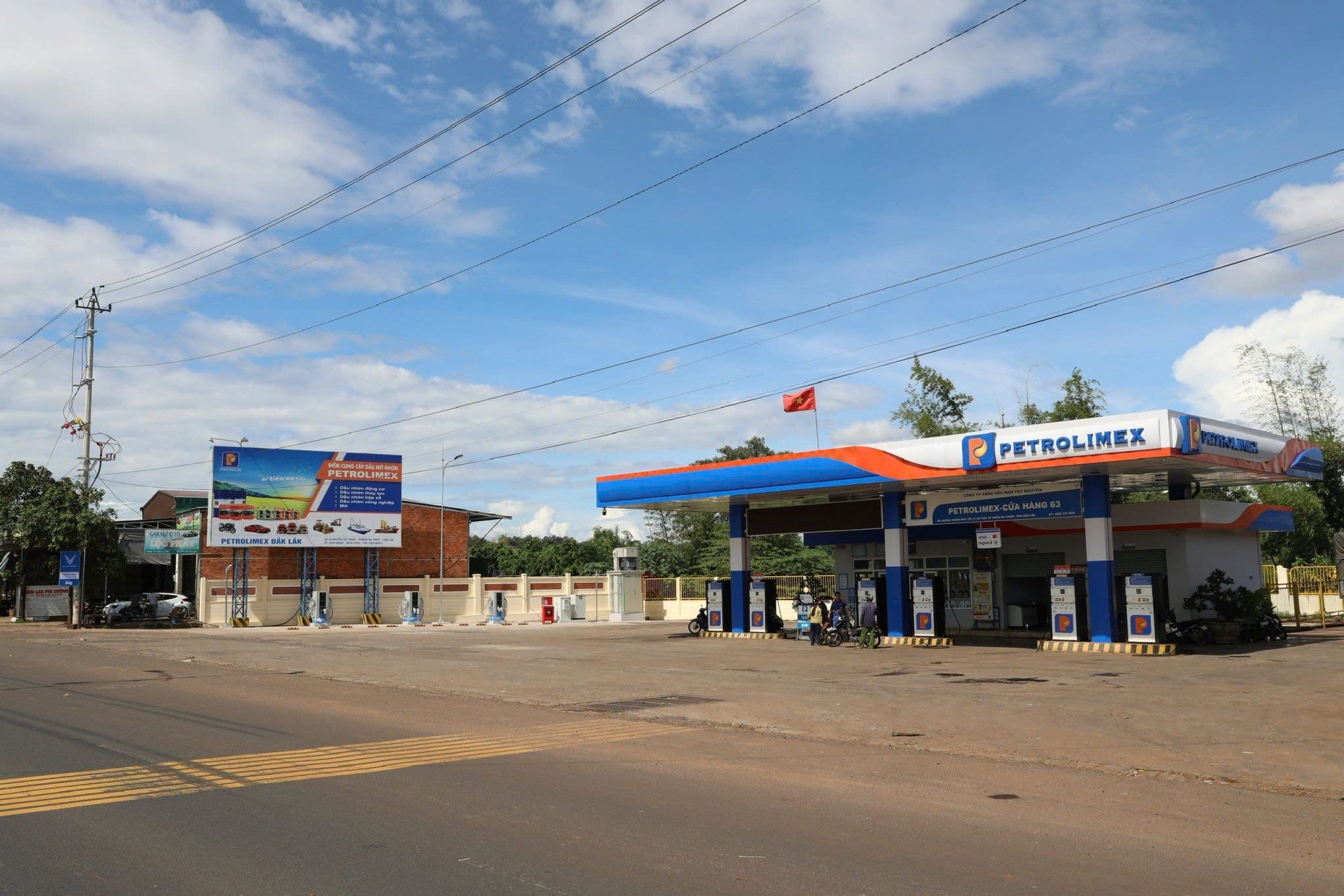
A model of a gas station combined with an electric vehicle charging station. Photo: Petrolimex
On the other hand, do you think that the electric vehicle market needs a large number of charging stations to boost sales?
I disagree with this notion. The mindset of “not buying electric vehicles due to a lack of infrastructure” stems largely from the habit of using gasoline and diesel vehicles.
Gasoline vehicles can refuel at numerous locations, whereas electric vehicles require dedicated charging stations. This makes finding a spacious parking lot for charging a significant challenge. Moreover, electric vehicles pose a higher risk of fire and explosion, necessitating a safe location. Charging stations also entail additional services such as maintenance and repair, which further emphasizes the importance of location. We cannot crowd dozens of vehicles into a single location as we do at gas stations. This means that when we discuss electric vehicle charging stations, we are considering a larger infrastructure picture rather than just the stations themselves.
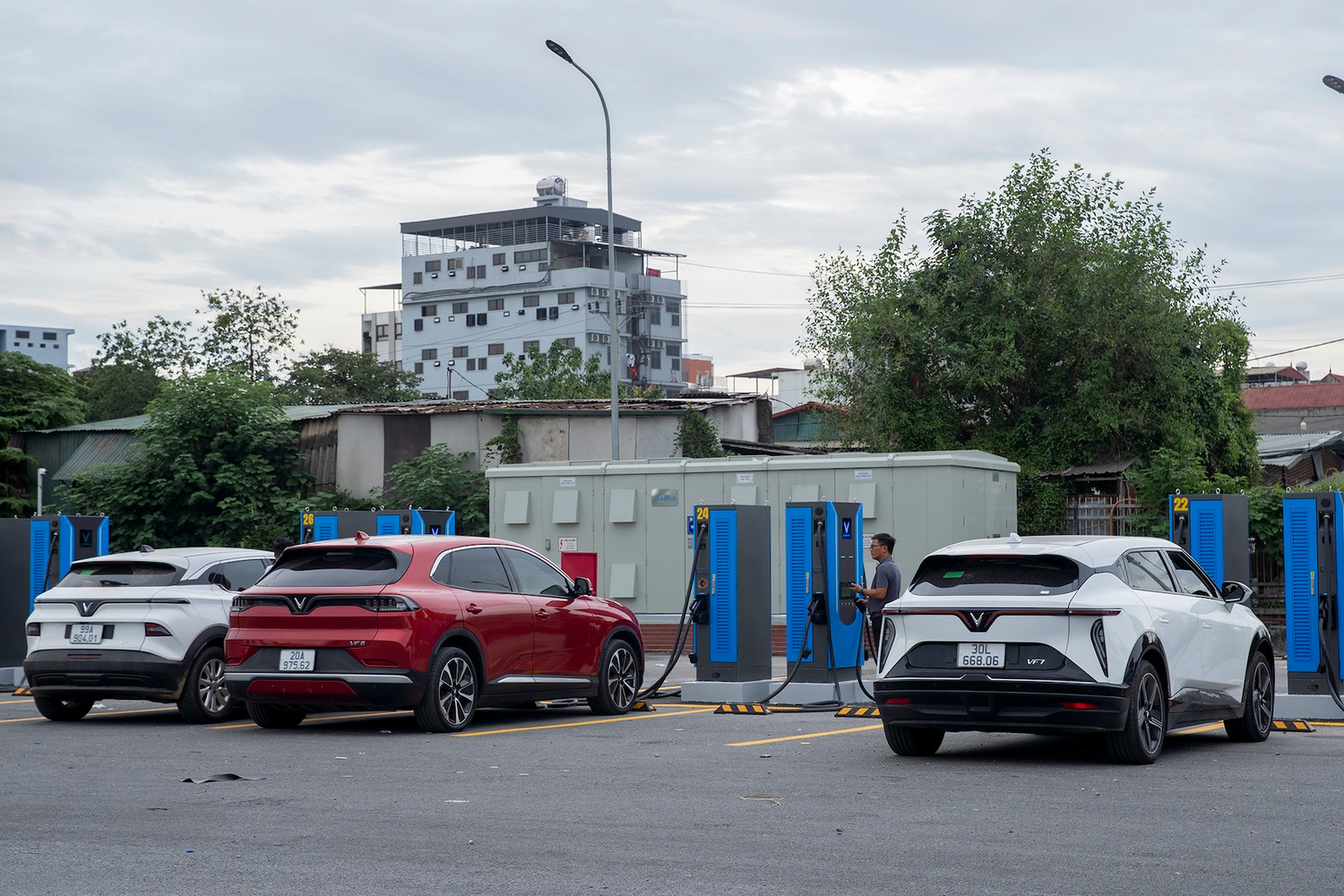
The location is crucial when constructing charging stations. Photo: VinFast
Regarding electric vehicle usage, I agree that charging stations are a significant concern. However, when we look at developed countries with a high adoption rate of electric vehicles, a clear trend emerges. Fast-charging stations are typically installed on highways and national roads, while urban areas encourage the use of smaller chargers equivalent to domestic electricity.
This is similar to charging a phone. During the morning commute from home to work, the vehicle uses a small amount of battery power. Therefore, we only need to charge enough to compensate for the loss, rather than charging extensively to add another 200-300 km of range. This charging approach differs from refilling a gasoline tank when it is empty. With electric vehicles, we can charge incrementally to compensate for the daily battery loss, rather than waiting for the battery to deplete completely.

In the future, high-quality vehicles will focus on maintaining battery quality even when only 20-30% of the battery is used daily. Technologically advanced electric vehicles feature exceptional battery management systems. Manufacturers are shifting towards battery solutions that can withstand multiple charging cycles rather than relying on a large battery capacity.
A smaller battery pack reduces the vehicle’s weight, thereby decreasing the energy required to “pull” the extra weight of the battery. Unlike gasoline, where a lighter vehicle consumes less fuel, the weight of an electric vehicle’s battery remains constant regardless of its charge level. This means that a large battery pack requires additional electrical energy to operate optimally. Additionally, a large battery can result in lengthy charging times, up to 9-10 hours.
For example, most public parking lots in China provide domestic electricity, which does not strain the infrastructure. This is sufficient for daily use, and only when traveling on highways do vehicles need to utilize high-power charging stations at rest stops.
Shifting back to VinFast, you’ve outlined the advantages they could gain by opening their charging network to other brands. What challenges might they face if they decide to do so?
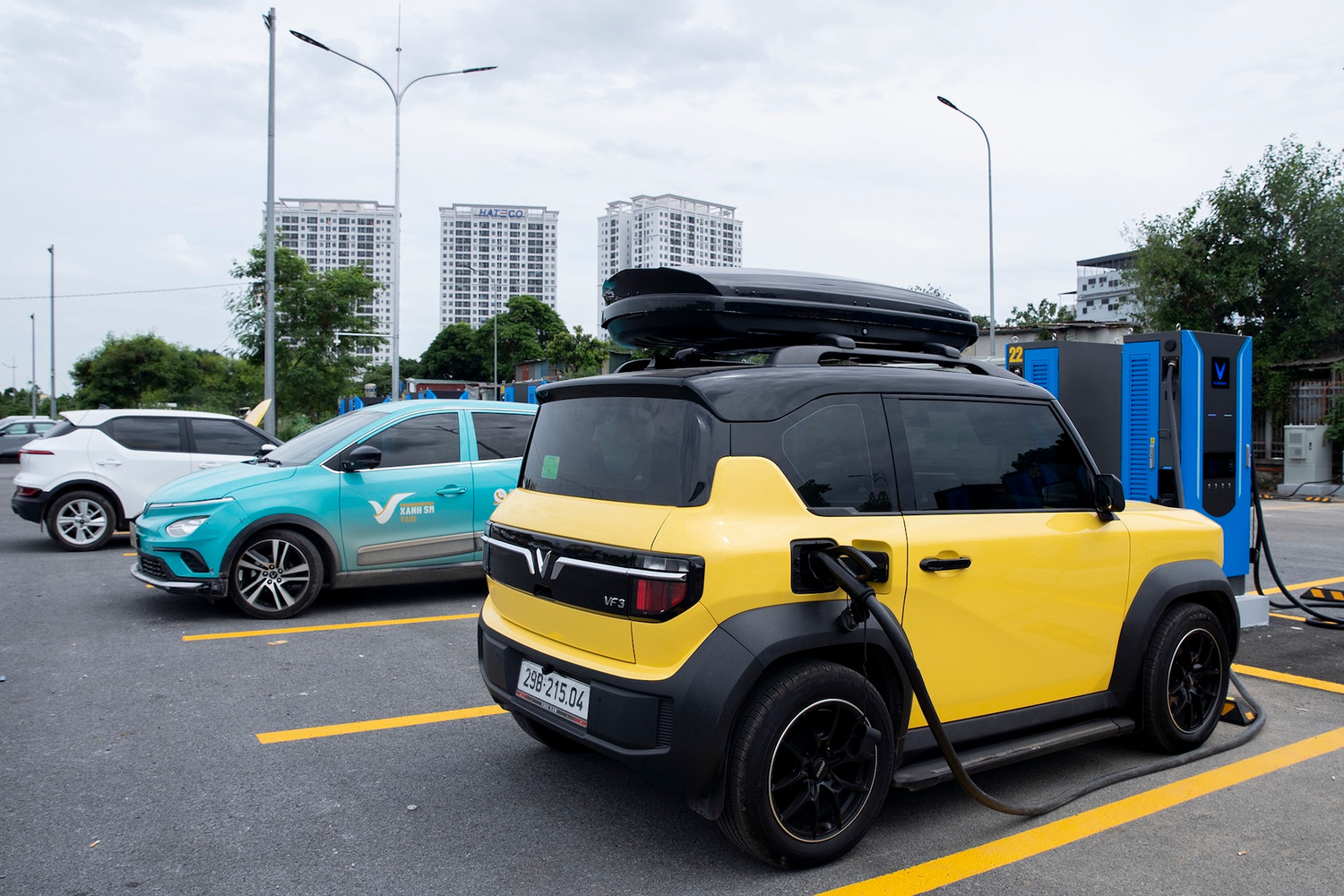
VinFast will likely face challenges if they open their charging network to other brands. Photo: VinFast
Currently, VinFast’s charging infrastructure is a significant advantage. Additionally, VinFast vehicle owners enjoy various benefits within the Vingroup ecosystem.
If VinFast opens their network, their customers might lose some of these advantages. However, I believe VinFast is not concerned about this competition. Their primary worry is overcrowding, as many of their charging stations are located in densely populated areas. If they open their network, there could be a sudden influx of vehicles from other brands, potentially leading to network overload. This is a scenario that VinFast would need to carefully consider if they decide to open their charging stations to competitors.
Secondly, if safety issues arise due to opening the network, determining responsibility would be another factor for VinFast to contemplate.
Thirdly, we know that the development of charging stations is closely tied to real estate and local policies. Vingroup, as a real estate developer, has an advantage in this regard. If another entity wishes to compete, how will VinFast respond and adapt?

You mentioned that opening VinFast’s charging network might lead to overcrowding. What about the reverse scenario?
As I mentioned earlier, VinFast owners currently enjoy free charging and various benefits within the Vingroup ecosystem. Therefore, they are unlikely to actively seek out other charging stations. Despite this, users still tend to stick with what they know, and they feel more secure charging at stations that have been quality-tested and are compatible with their vehicles.
How do you think VinFast customers would react if the company stopped offering free charging?
This concern is valid, as we have seen similar situations with other vehicle brands that offered initial incentives but later discontinued them, leaving customers disappointed. I believe companies have the right to provide such incentives to attract customers. However, individuals should be prepared to pay for these services once the promotional period ends.
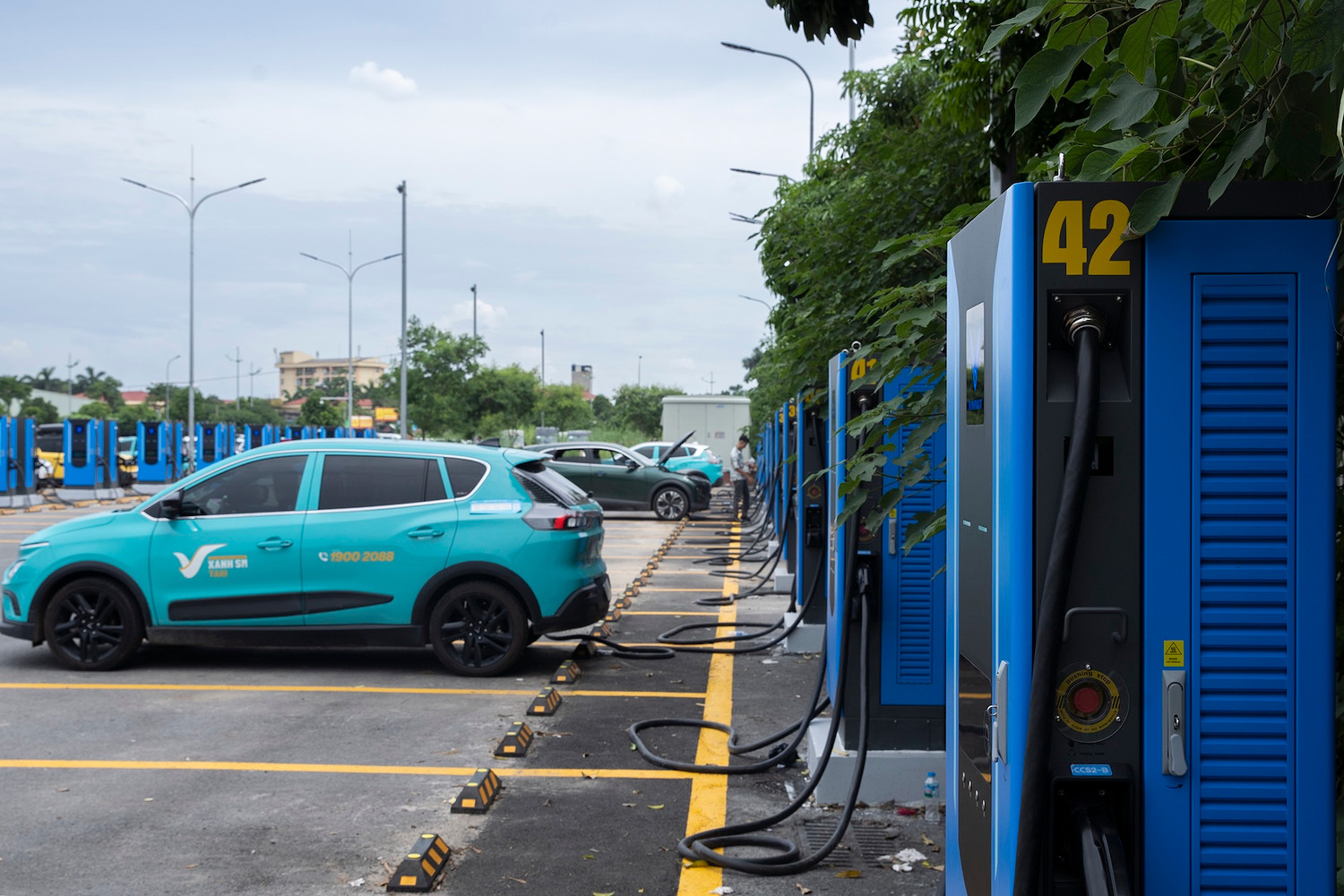
A charging station with 42 charging ports in Hanoi. Photo: VinFast
Another point regarding charging stations is that many people worry about compatibility standards. This is a technical issue that can be adjusted. In my opinion, a universal payment system and a standardized quality control system are more crucial. These two factors will drive competition among providers and enhance user convenience.
Currently, VinFast’s charging network and mobile app are well-established. However, other charging providers lack similar systems, causing difficulties for owners of other electric vehicle brands when they need to charge their vehicles at third-party stations.
Thank you, Mr. Linh, for sharing your insights.
The Trên Ghế program is a collaboration between Ho Chi Minh City Television (HTV) and VCCorp; with AutoPro as the implementing partner and AdWheel as the commercial exploitation partner.
The program is broadcast on HTV9 at 6:10 PM from Monday to Saturday and rebroadcast at 8:00 PM across VCCorp’s multimedia platforms.
“Rivals Welcome: VinFast Opens Charging Stations to All Electric Vehicles.”
According to journalist Nguyen Thuc Hoang Linh, VinFast may consider opening its charging stations to other car brands in the future. However, the company should carefully evaluate the potential implications of such a decision.
“VinFast’s Half-Billion Dollar Factory Launches in the World’s 5th Largest Economy, Ushering in a Wave of Massive Orders”
VinFast, a leading automotive manufacturer, has proudly inaugurated its new electric vehicle assembly plant in the Indian state of Tamil Nadu.

